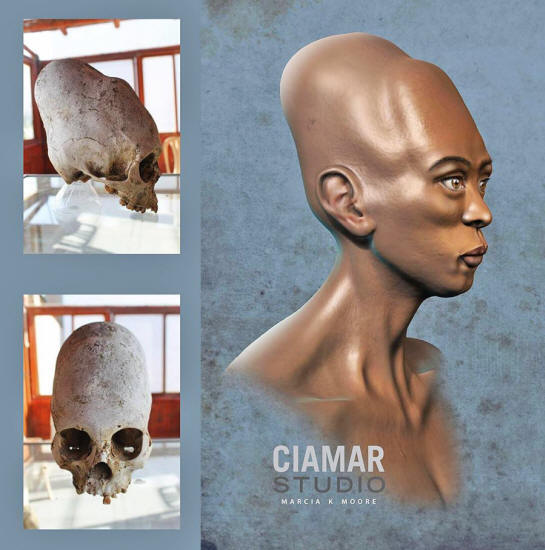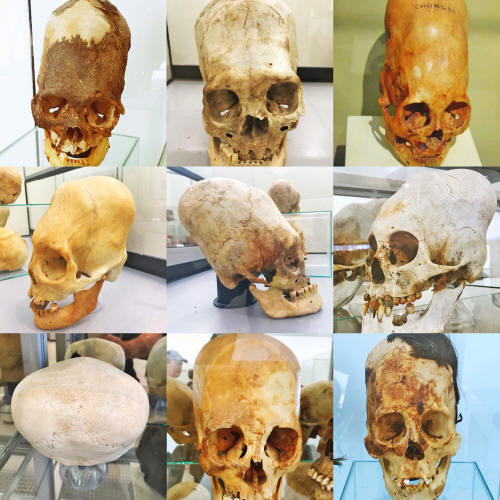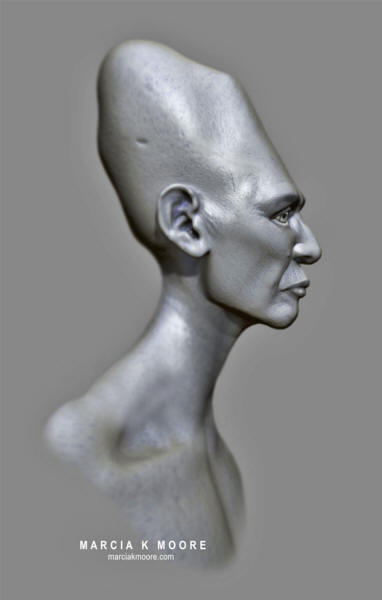The DNA results
actually were incredibly complicated…
It's going to take me
some time to actually figure out what the results mean. What it
does show for sure is that the Paracas elongated skull people
were not 100% Native American.
They were a mix or
even you could say, in some ways, a hybrid of different people.
Their
blood types are very complicated as well, they should be
blood type "O" if they're 100% Native American and that's not
the case.
We are likely looking at a sub-species of humanity as
regards to the Paracas…
Seems to be a lot of
DNA evidence from extreme eastern Europe and extreme western
Asia. More specifically I'm talking about the area in between
the Black Sea and the Caspian Sea where ancient elongated skull
people lived I think about 3000 years ago.
So I think we are
looking at a migration pattern starting in the Caspian Black Sea
area and then entering through the Persian Gulf and then moving
eastwards eventually winding up on the coast of Peru.
So that's the
hypothesis I'm developing now. 10 of the Paracas elongated
skull's blood were tested and they should be 100% type "O"
because that is Native American, but it's turning out high
percentages of type "A," a small percentage of type "B," very
high percentage of type "A-B" and less than half is "O."
So the Paracas were
an incredibly complex ethnic mix of people…

There are a number of
different
haplogroups that were found in the DNA tests of the
Paracas elongated skulls and these haplogroups, which is your
genetic ancestry, they don't fit in with the history of Peru in
any shape or form…
It appears that the
largest elongated skulls on the planet have been found,
So my theory is that
there was a sub-species of human which we are going to be
eventually calling Homo-Sapiens-Sapiens-Paracas, and they were
living in the area in between the Caspian and Black Sea.
They were invaded by
somebody… and so they were forced to flee. By studying the wind
and currents of the oceans I've been able to come up with the
following concept…
They moved southwards
until they found the Persian Gulf and then they sailed down
through the Persian Gulf and once they left that area the boats
were probably taken by the prevailing currents and winds which
would have taken them eastward into the Pacific ocean.
Over the course of a
period of time, maybe tens of years or hundreds of years, they
began to breed with people in the Pacific and that's why we're
getting such a complicated reading of blood-types…
They made it to
Tahiti, from Tahiti they were able to sail south to New Zealand
and then once they hit New Zealand they were able to catch the
Humboldt current that took them up the coast of South America.
They were looking for
a good harbor to land their ships or boats and when they hit the
largest natural bay on the coast of Peru which is Paracas,
that's where they stopped and that's where they decided to
establish themselves because almost nobody was living there at
the time…
Over the course of
time they had to breed with local native people otherwise their
bloodline would become to concentrated… eventually they found Paracas probably about 900 B.C. and they lived in relative
peacefulness…
In 100 A.D. the
invasion of the
Nazca people happened from the north and when
the Nazca entered the area, they slaughtered the elongated
people who were the only royal class of people.
We had 3 medical
experts with us,
-
Dr Malcom
Warren (Chiropractor)
-
Rick Woodward
(Anthropologist)
-
Dr Michael
Alday (Medical Doctor),
...and all 3 of them
stated quiet emphatically that because of the abnormalities
found with some of the Elongated Skulls from the Chongos
cemetery in Peru they have no other choice but to state that
some of these ancient Paracas were a sub-species of humanity…
It had to be genetic,
they had to be born with these abnormalities.
They had dark red
hair… the royal Paracas were the ones with elongated heads, not
the common people…
The royal family of
the Paracas, they lived in
subterranean underground houses
and I think the reason for that is that they had light-colored
skin, probably sensitive eyes because of the extreme sunshine…




